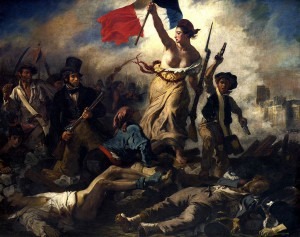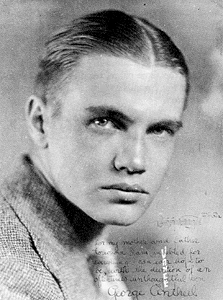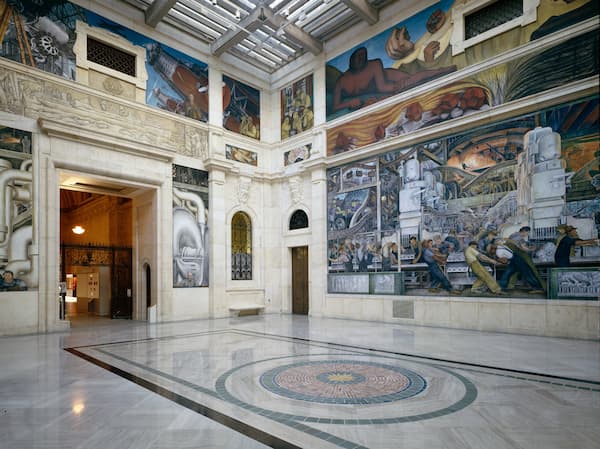
Delacroix: Liberty Leading the People
The picture was purchased by the French government but was removed from public view until 1848 when King Louis Philippe’s reign ended and President Louis Napoleon (Napoleon III) came to power. It is now in the collection of the Louvre.
This work was the declared inspiration for that ‘bad boy’ of American music, George Antheil (1900-1959). His Symphony No. 6 received its première by the San Francisco Symphony on 10 February 1948 and in his notes for that performance, Antheil mentioned that Delacroix’ picture had been the source of his inspiration.

George Antheil
If we look at how Antheil captured the essence of a very French painting in his very American symphony, we have to look at the basic motive on which he bases this movement. We hear its entry, slightly distorted in the flutes at 00:15 – it’s the Battle Cry of Freedom, the American Civil War marching tune. Antheil uses the melody as the basis for his driving rhythms and quiet / loud alternations through the movement as he builds towards the climax where the Battle Cry of Freedom returns in a very militaristic set of statements.
When you relate this to the picture, we have the quiet of the dead in the front of the picture, the agitated minds of the armed crowd, the cries of the little boy with the pistols, and pushing it all ahead, Liberty in the middle, confident of her followers and unafraid of what lies ahead. The smoke of the city seen in the background seems to hang over Antheil’s music, hiding and then revealing the motive.
Antheil used his love for France to create a quintessentially American work but one that gains greater depth when you look at the art that inspired him.


